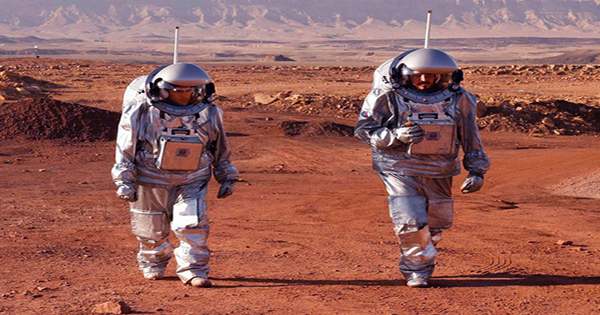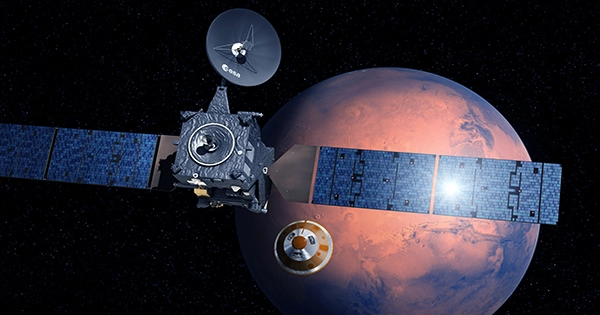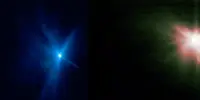In Washington The ExoMars project has financing secured by the European Space Agency for a launch in 2028, but that plan requires collaboration with NASA that has not yet been formalized.
The ExoMars mission was left stranded after ESA ceased cooperation with Russia in the wake of Russia’s invasion of Ukraine just months before its scheduled September 2022 launch. ESA Director General Josef Aschbacher announced this at a press conference on Nov. 23 at the conclusion of a two-day ministerial council meeting.
About half of the 700 million euros ($725 million) needed to replace mission components that Russia was initially supposed to contribute, including the landing platform that would carry ESA’s Rosalind Franklin rover to the surface of Mars, were sought by ESA going into the conference.
“There were different options that have been discussed, all the way to putting the Rosalind Franklin rover in a museum,” Aschbacher said. “I am very glad to say that we have found a very positive way forward.” He did not disclose how much funding ESA member states contributed to ExoMars.
With a few exceptions, the mission, which will launch in 2028, will mainly swap out the Russian components for European ones. We anticipate that the United States will contribute to this as well, he continued, providing a launcher, a braking engine, and the RHUs, or radioisotope heating units. However, Europeans make up the majority of the upcoming ExoMars expedition.

These NASA contributions are consistent with earlier statements made by project administrators. Since there are no comparable thrusters available from European suppliers, Jorge Vago, the ExoMars project scientist at ESA, said that the organization would likely need thrusters for the new landing mechanism similar to those Aerojet Rocketdyne built for NASA Mars landers.
Additionally, Europe lacks the plutonium-238 required for RHUs, batteries the size of C-cells that generate heat through radioactive decay. For instance, the eight RHUs used by NASA’s solar-powered Spirit and Opportunity Mars rovers kept the spacecraft warm without the need for electrical power. Because the RHUs cannot be exported, supplying them would also need launch on a U.S. vehicle.
The launch will be the most expensive component, according to an industry source who declined to be named. The total NASA contribution is expected to be in the neighborhood of several hundred million dollars. In return for such contribution, NASA is anticipated to look for chances for American scientists to participate in ExoMars.
Officials from the ESA and NASA have been making vague references to a possible role for NASA in supporting the ExoMars mission for months but have refrained from providing specifics. In a meeting in June, Aschbacher and NASA Administrator Bill Nelson exchanged letters of support for ExoMars, which Aschbacher described as “quite powerful,” but Nelson made no formal commitments.
Aschbacher said at the briefing that those planned NASA contributions were pending an agreement yet to be finalized between the agencies. “Their contribution still needs to be confirmed because they waited for our decision today,” he said.
Since the ministerial meeting, NASA has not made any public statements regarding its ExoMars plans, and on November 23, inquiries about the agency’s plans for the expedition went unanswered.















